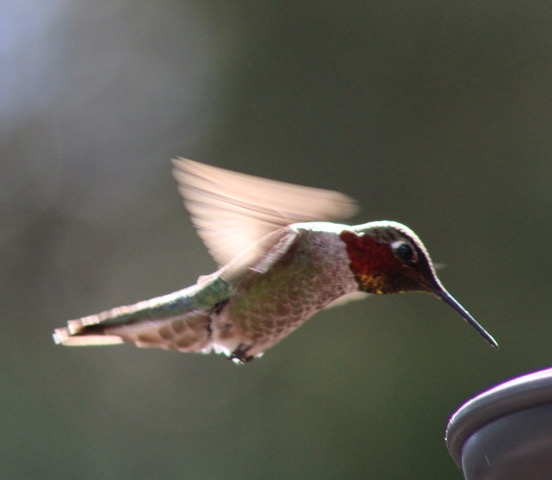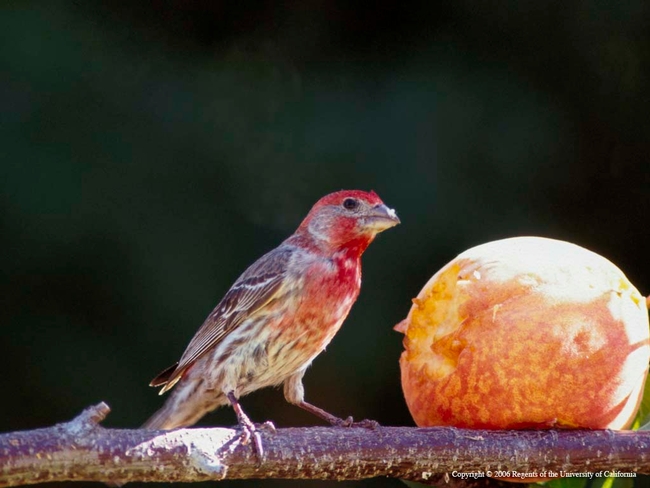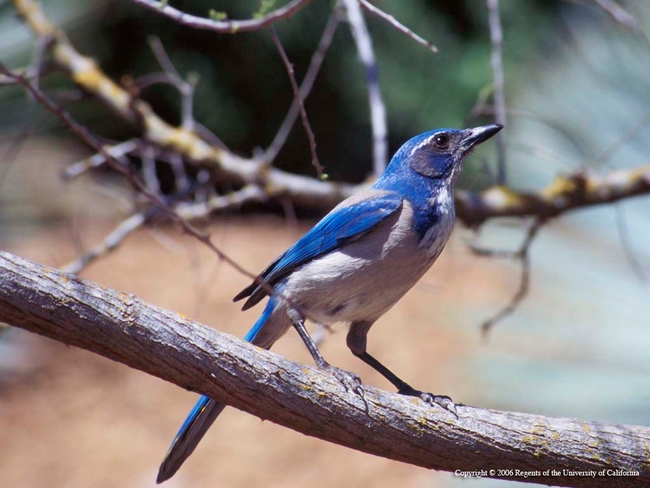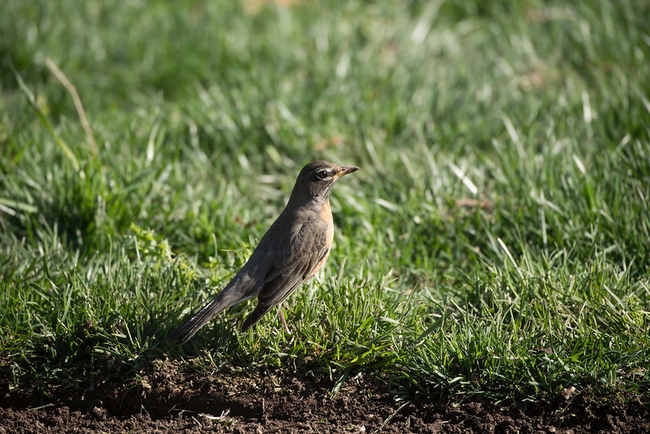
Early morning birdsong, hummers darting around flowers and tiny doves in patio nests are enchanting. Without the farmers' concern about profit, gardeners can more readily forgive the occasional pecked fruit, stolen nuts and avian grazing on freshly planted vegetable seeds.
UC Cooperative Extension human-wildlife interaction advisor Breanna Martinico said during a webinar presentation that integrated pest management techniques can be used to maximize bird benefits while minimizing the damage they can cause.
She suggests starting with identification.
“Bird ID is fun,” she said. “Sit in the backyard with a cup of coffee, binoculars and a bird ID guide and get to know what birds are using your backyard. It's a great way to relax and connect with nature. You might be surprised what you find that you weren't noticing before.”
If birds are causing a problem, cultural practices – such as exclusion with netting or frightening with bird distress calls or fake predators – are more effective than control. “Be sure to include a cost-benefit analysis when deciding on bird deterrents or exclusion,” she said. “It may be best to tolerate damage if it is minimal.”
Lethal control is strictly regulated and rarely the best choice. Many birds in the U.S. are protected under the Federal Migratory Bird Treaty Act. It is illegal to kill or capture migratory birds or destroy their eggs or nests. Game bird hunting is regulated by the California Department of Fish and Wildlife and limited by location and hunting seasons.
Martinico's talk was more focused on supporting bird populations by making gardens welcoming to birds, and gaining an appreciation for the beneficial role bird species play in California.
She shared the results of recent research on Western bluebirds and songbirds that used forensic DNA analysis of droppings to determine exactly what birds are eating.
“They eat incredible amounts of insects,” Martinico said. “If a particular insect is abundant and becoming a pest, they are effective at reducing pest numbers.”
Sometimes birds that have a reputation for eating desired crops only do this during certain seasons, while at other times they are gardeners' friends. Blackbirds, for example, eat insects in the spring when they need a protein-rich diet to feed their young. They only need to be scared away in late summer, when their flocking behavior becomes more prevalent, and they switch to grains and seeds.
Welcome birds to the garden
Invite birds to your garden by growing diverse, complex landscapes with food and water sources. Large monocultures, like lawns, can have ample resources for pests, but not enough to support other species that might reduce pests, Martinico said. Grow native plants and large trees, and place nest boxes for pest-eating birds like barn owls, ash-throated flycatchers, Western bluebirds, tree swallows and house wrens. Raptor perches will give birds of prey a place to hunt for gophers and other rodents.
When there is bird activity in the backyard, particularly nests with eggs or chicks, minimize the presence of people, cats, dogs, noise and bright lights at night, Martinico said.
Resources:
Birds on home and landscape tree fruit and vines, UC Integrated Pest Management Program
Songbird nest box plans, North Carolina State Extension
Barn owl nest box plans, Wild Farm Alliance
Information about local bird populations, Nestwatch, Cornell Lab of Ornithology
Birds: Friends or Foes? webinar on YouTube
Breanna Martinico, Human-Wildlife Interactions Advisor, Napa, Lake, and Solano counties


